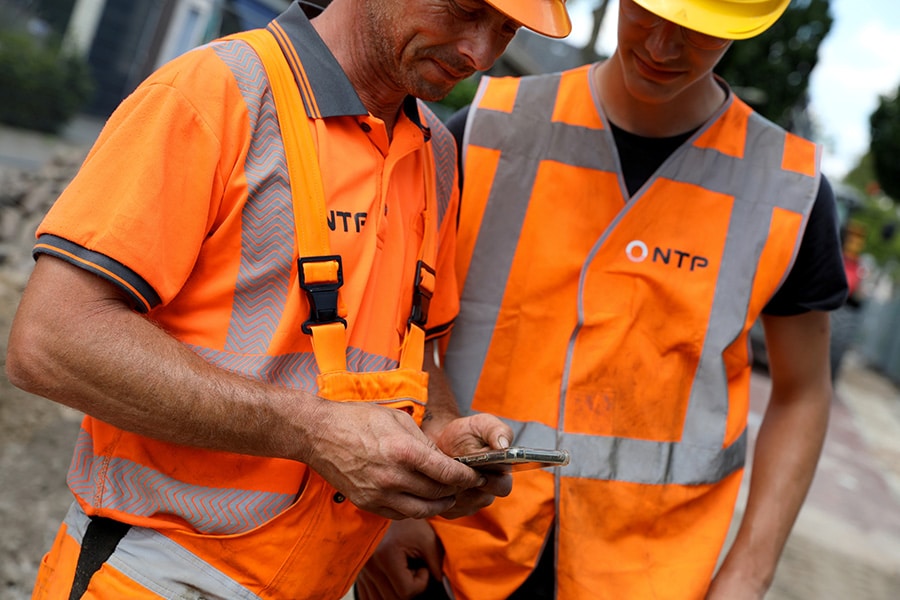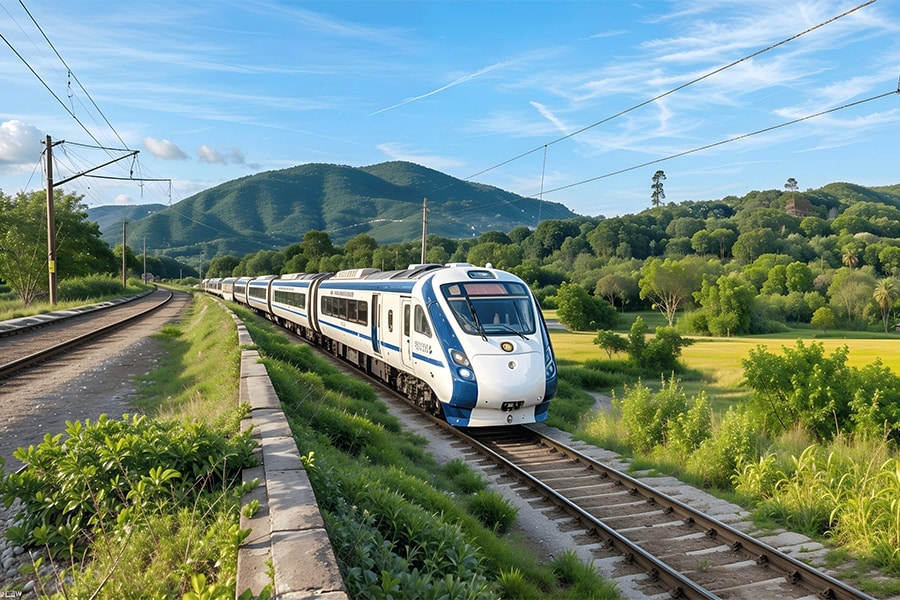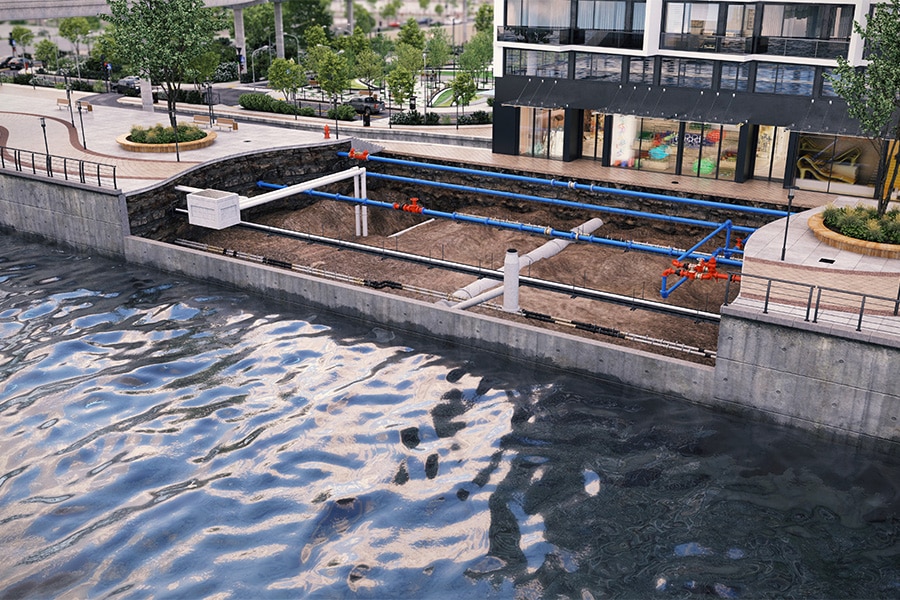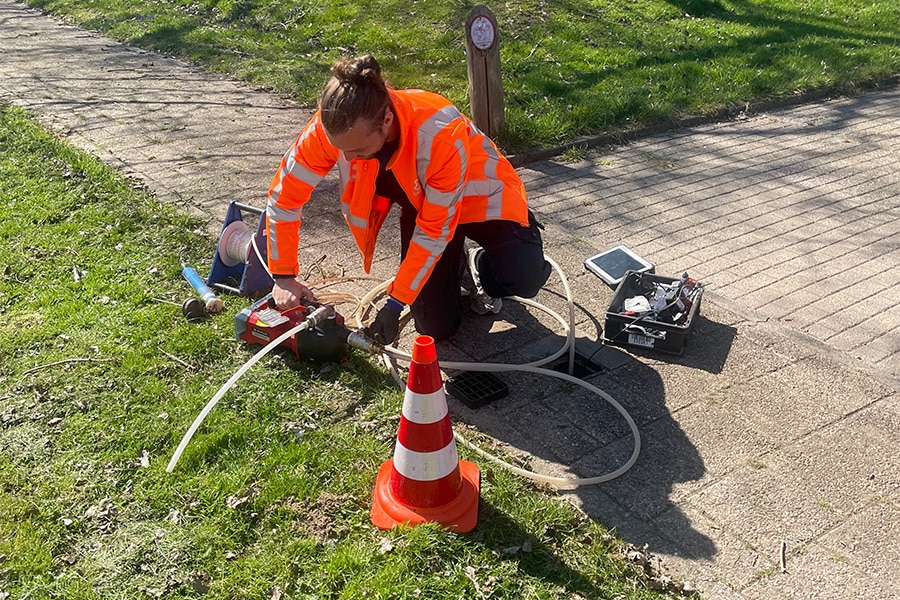
Versatile partner for any monitoring issue
Traditionally, Geonius has provided integrated engineering services and field research with broad expertise in the infra domain. Within those disciplines, data collection has always been an important foundation, and that market is growing. Since 2022, therefore, Geonius Monitoring forms an independent department within the company and completes the circle. Because monitoring at Geonius means directing the entire process, from fieldwork to data analysis and advice.
Geonius provides monitoring in areas such as groundwater levels, pore pressure, vibration, noise, pocket beacons, XYZ deformation and slope measurements (inclinometers). "Placing those sensors and monitoring wells or performing drilling we do all in-house with our own colleagues in the field," says Erik van Eert, manager of the geodesy and monitoring department. All collected data are accessed through the in-house developed portal: GIDS. "Gathering data is one thing, opening it up and making it transparent is two, and then someone has to work with that data to come up with a well-considered recommendation: that's what our geotechs and geohydrologists are busy doing. And so we offer a total package to our clients."
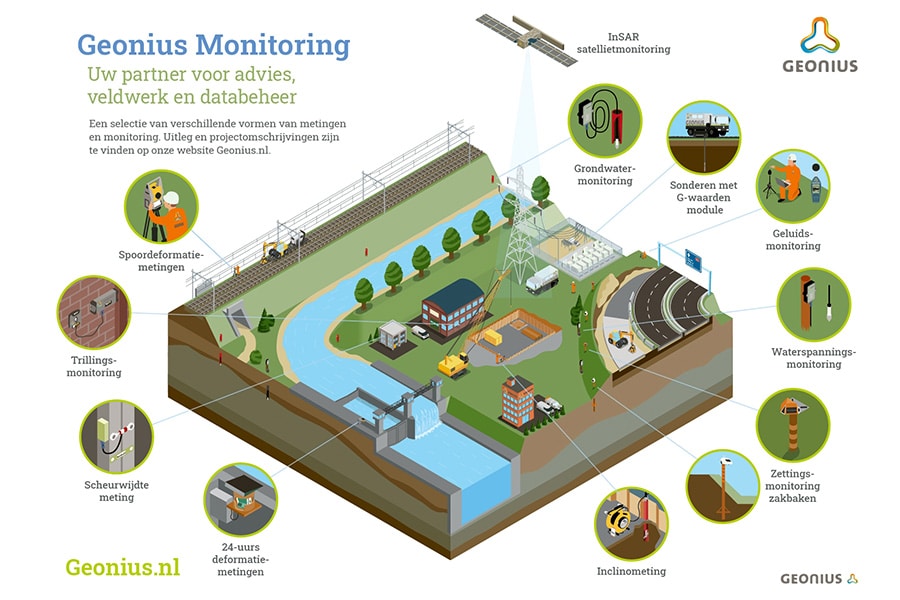
Online portal
The online portal GIDS is unique of its kind. "In particular because of its brand-independent set-up," says Frank den Daas, monitoring project leader. "Whereas other parties often handle their own portal per sensor or supplier, we bring all data together in one platform in a well-organized way. This creates an integrated picture of various influences on a project - for example, the relationship between pore water pressure and settlement of an embankment. The user no longer has to switch from application to application, but gets insight at a glance. This makes GIDS not only innovative, but also an essential tool in complex projects. Because we develop the software entirely in-house, we can respond quickly to trends and developments, or the addition of other types of sensors or clients' own sensors."
Continuous measurements
From Geonius Monitoring, we are regularly confronted with very large queries, says Van Eert. "Monitoring is a hot item. Years ago, a surveyor would come once a month to take a pocket check, for example, but increasingly clients are asking for continuous measurements, real-time data and preferably an automated alarm. Logical too, because this allows them to optimize their planning and reduce risks." The need for monitoring is also growing at the municipal level, Den Daas adds. "For example, we are responsible for the eight-year monitoring within the Water and Climate Network, merging the network of eleven municipalities and one district water board to map long-term trends. To this end, we have returned 390 monitoring wells to new condition and equipped them with telemetric loggers, and have installed a large number of additional monitoring wells. A dynamic project that fits us like a warm coat."
Integral services
Other projects where Geonius Monitoring has proven its added value are the A24 Blankenburg connection for monitoring construction pits and the surrounding area, and now also on the A27. "Between Houten and Everdingen we provide the trial terimeter monitoring, and between Everdingen and Hooipolder additional (geo)hydrological advice," says Pascal Born, geohydrologist at Geonius. "On this project the strength of our integral engineering services combined with field research and monitoring comes into its own to the maximum extent. Admittedly slightly smaller in proportion but also an integral project we are currently performing in the Limburg town of Sweikhuizen. Our infrastructure branch has made a new sewerage plan for the entire residential core, where we are investigating from Monitoring with groundwater monitoring how and where rainwater can be infiltrated into the area."
Geonius proves that monitoring is more than measuring. It is bringing together technology, data, advice and software in a fully integrated approach. Thanks to GIDS, cooperation between departments is strengthened, customer requirements can be addressed quickly and one clear reality is created in the field.
Is this a field of work that appeals to you? Be sure to contact us - we are looking for colleagues who want to help build the future of monitoring.

